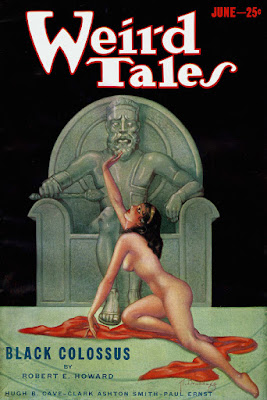Chances are you've probably held a Little Golden Book at some point in your life. There are thousands of them. The first one was published in 1942 as a project of Georges Duplaix, then head of Artists and Writers Guild Inc. as a follow-up to the publishing concept of A Children's History. At the end of the first year, Simon & Schuster had a runaway hit with 1.5 million books sold. In 1958, Simon & Schuster sold Little Golden Books to Western Publishing, which then later sold it to Random House.
I remember owning a lot of second-hand Little Golden Books, including some that were Golden Melody Books that played songs. But, my fascination was on the Golden Books special line of male-oriented titles published as A Golden Super Adventure. These special books, published in the 1980s, focused on toy-line franchises that often shared an animated children's television show. Brands like Masters of the Universe, Princess of Power, Centurions, Mask, Defenders of the Earth, and Adventures of the Galaxy Rangers.
As a fan of Conan, I stumbled upon the lone Golden Book dedicated to the barbarian hero, The Thing in the Cave. It was originally published in 1986 as part of the Golden Super Adventure line. The book's cover was painted by the great Gino D'Achille (Fu Manchu, Barsoom, Flashman) while the interior pages were illustrated by the equally great Dan Adkins (Doctor Strange, Eerie, Creepy).
Conan fans may remember a short story titled “The Thing in the Crypt”, which was authored by Lin Carter and L. Sprague de Camp and first published in the 1967 Lancer paperback Conan. This Little Golden Book publication, The Thing in the Cave, is a reworking of that story. It was authored by Jack C. Harris, a prolific comic book author and editor that worked for DC Comics penning titles like Wonder Woman, Supergirl, Batgirl, Robin, and the graphic novel Batman: Castle of the Bat. After leaving DC, Harris freelanced for DC, Marvel, and Darkhorse while also working for a trade magazine for the licensing industry. It was here that Harris received a press release from Golden Books about a series of Masters of the Universe publications being created for the Golden Super Adventure line. Harris connected with a colleague that led him to penning a number of Golden Books including Masters of the Universe, Batman, Dino-Riders, Super Mario Bros., Garfield, and this Conan book.
I would encourage you to read my review for the original “The Thing in the Crypt” (or just read that story). This Golden Book variation stays mostly true to form, but retains some safety measures for the sake of the young reader. In this version, Conan uses the chains to crack the hardened ice, thus allowing the snarling wolves to simply fall away into oblivion. In the original story, these snarling wolves chase Conan to the cave. The cave itself is substituted for the more sinister-sounding “crypt”. Also, the giant sword-wielding monster isn't so much a mummy, but instead is simply an animated statue made from rock.
At 25-colorful pages, this was a fun little visual jaunt into “The Thing in the Crypt”, a fun, yet criticized story inspired by Robert E. Howard's literary work (mostly because it is the first story in the Conan paperback and is missing REH). My guess is this Conan title was inspired by the many Golden Book publications featuring He-Man and the Masters of the Universe. Nonetheless, this is a great collector's item and worth a couple of twenty-dollar bills for the pure nostalgia.
Buy a copy of this book HERE




















